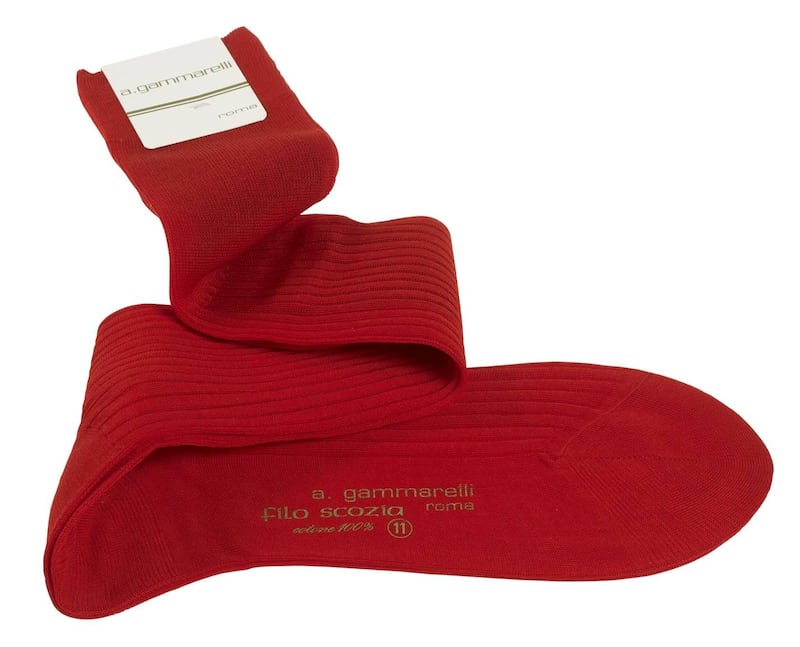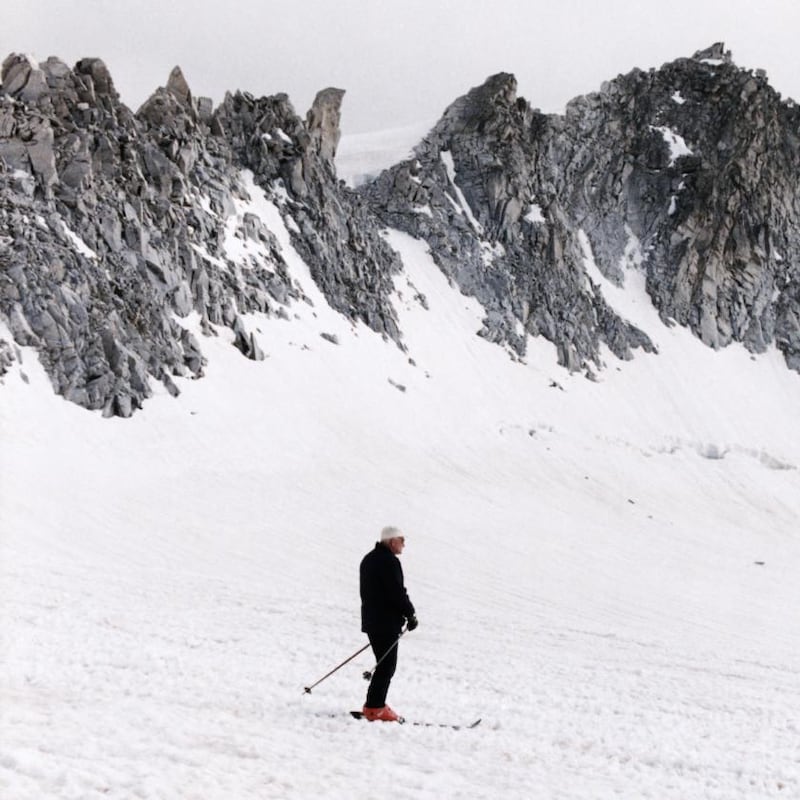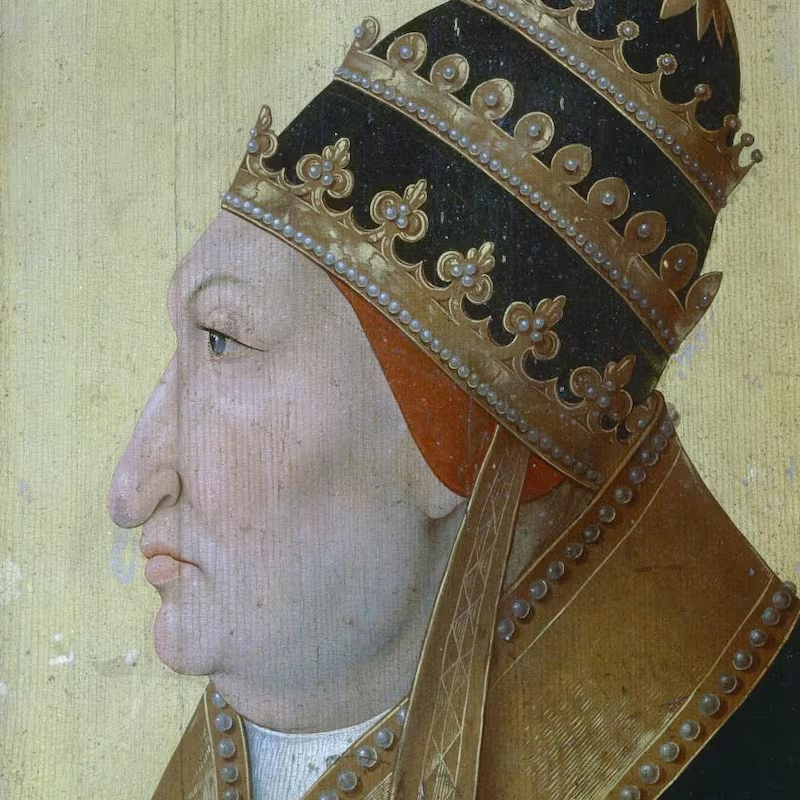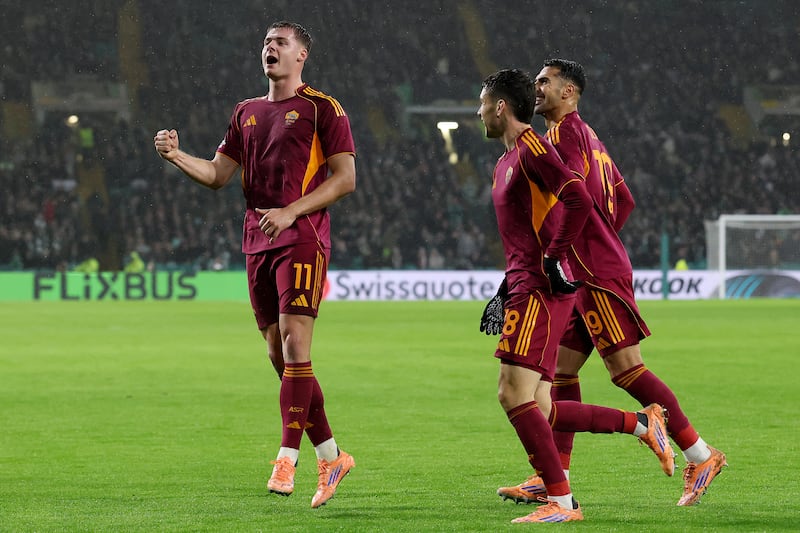As you'll know unless you've spent the last few weeks sequestered in a beehive hut on Puffin Island, the pope is due to touch down in Ireland at 10.30am this morning. To mark his visit – or just take your mind off the traffic chaos – here's an opportunity to brush up on everything you've probably never asked yourself about popes and the papacy, from what to say to Pope Francis if you get stuck in a lift with him, where to buy socks like his, and which of the past popes he'd probably prefer to forget.
How do I become pope?
Are you a cardinal? If not, it's not good news. Theoretically, any baptised, male Catholic who has reached the age of reason, is not a heretic, is not in schism (refusing to submit to the pontiff) and is not "notorious for simony" (selling ecclesiastical privileges) can become pope. However, for the past 600 years, the cardinals have chosen one of their own.
If I can't be pope, can I get a cassock like his?
Not readily. However, you can buy a pair of knee-high socks in papal white cotton or cardinal red silk made by the ecclesiastical tailor Gammarelli for ¤23. The Gammarelli family, which has been making clothing for the clergy since 1798, is also responsible for making the pope's white, watered silk cassock, which he puts on immediately after the conclave – during the deliberations, sets in three sizes are left in the Room of Tears, to cater for all possible papal body shapes. The handmade red papal shoes and dashing ermine-trimmed cape beloved of Benedict XVI have fallen out of favour during the reign of Francis, who prefers a simple pair of plain black brogues.

How much does one get paid for being pope?
Nothing. In 2001, the Vatican confirmed that the pope "does not and has never received a salary". As a Jesuit, Pope Francis had already taken a vow of poverty. On his election, the pope-elect's private property is usually either donated to the church, transferred to a family member, used to endow a foundation, or placed in trust. However, according to the Italian paper La Stampa, Pope Emeritus Benedict XVI – who was the first pontiff since 1415 to retire from office when he stepped down in February 2013 at the age of 85, citing deteriorating strength – gets a pension of €2,500 a month. He continues to live in the Vatican where, according to Reuters, he benefits from security, privacy and "legal protection from any attempt to prosecute him in connection with sexual abuse cases around the world".
So if I bump into Pope Francis over the weekend, what should I say?
Pope Francis – or Papa Francesco – has an extensive shopping list of titles including "Bishop of Rome, Vicar of Jesus Christ, Successor of the Prince of the Apostles, Supreme Pontiff of the Universal Church, Primate of Italy, Archbishop and Metropolitan of the Roman Province, Sovereign of the Vatican City State, Servant of the servants of God". However, he is never formally introduced, because you're supposed to just know. If you get to meet him, a simple "Your Holiness" or "Most Holy Father" will do. You might wish to genuflect and, if you get close enough, to kiss the Ring of the Fisherman, though at least one Irish bishop, Bill Murphy of Kerry, said in 2010 that he found this tradition embarrassing, while former US vice-president Joe Biden refused to kiss the ring of Pope John Paul II, saying it was "undignified". Refreshingly, Pope Francis doesn't seem to care either way: he has a habit of hugging people, bowing to them or, when cardinals kiss his ring, he kisses theirs back.
What you actually talk about is up to you – if you want to keep it light, there's football (he's a supporter of Argentina's San Lorenzo team), the films of Fellini, and the music of Bach, Beethoven, Mozart and, er, Patti Smith. He's a fan of pizza and used to dance a fairly handy tango. He hasn't watched TV in 25 years, so his views on Love Island are probably out.
If you want to put the time to better use, you could try to clarify his views on homosexuality, which the church still teaches is “intrinsically disordered”, though Francis recently told a gay Catholic man that “God made you like this”. Or you could ask him to finally admit the cover-up of decades of child abuse, as Amnesty director Colm O’Gorman recently urged, or suggest that he reaches out to the homeless or the marginalised in Irish society or to women, who have historically been sidelined and disempowered by the church. Or you could try reminiscing about colourful popes of the past – though, since several of these the church would almost certainly prefer to forget, you might find that’s a very short conversation.
The enterprising ones
Pope Francis recently praised entrepreneurs, but it's a safe bet he wasn't referring to Pope Leo XIII (1878-1903), who publicly endorsed vin mariani, a "medicinal" wine created in 1863, to which he was partial. He carried a gold hip flask of it with him and awarded a gold medal to its creator Angelo Mariani. It contained 7.2 mg of cocaine per ounce of wine.
The entrepreneurial skills of Pope Sixtus IV (1471-1484) are even more renowned. He licensed brothels and cunningly suggested to the Catholic community that the time their dearly departed loved ones in purgatory could be lessened if only they made a small donation to the Vatican.

The sporty ones
In his earlier years as pope, John Paul II (1978-2005) was known to occasionally sneak out of the Vatican to go skiing or hiking. He also had a swimming pool installed in the papal residence at Castel Gandolfo. Pope Francis is himself a keen football fan and played basketball as a young man. He recently said sport was a spiritual experience, and that it's okay to play on a Sunday.
The arts-loving one
Gregory I (590 – 604), also known as Saint Gregory the Great, is the patron saint of musicians, singers, students, and teachers, and is commonly credited with founding the Gregorian chant. Pope Julius II (1503–1513) was responsible for commissioning Michaelangelo to paint the ceiling of the Sistine chapel, and Raphael to give a fresh look to various rooms in the Vatican. Eat your heart out, Dermot Bannon.
The ones who didn't last long
Throughout the history of the papacy, there have been 14 different calendar years in which three different popes reigned. The year 1276 holds the record for the most popes – following the death of Gregory X, Innocent V was next, but died five months later. Adrian V, his successor, died five weeks into the job. The fourth pope that year was John XXI, who survived seven months before being crushed to death when the ceiling of a new study he had constructed collapsed.
The bloodthirsty ones
Pope Benedict IX (1032–44; 1045; 1047–48) served three terms, despite his principal qualification being having two uncles as popes. He was, it's safe to say, not well liked. St Peter Damian called him a "demon from hell in the disguise of a priest". Pope Victor III wrote that he had a "life as a pope so vile, so foul, so execrable, that I shudder to think of it". Amongst his many misdemeanours were bribery, simony, adultery, and he was also accused of murder, rape, and paedophilia. He was expelled from Rome in 1044, and sold the papacy to his godfather, Pope Gregory VI. Then there's Sergius III (904-911). He has the dubious distinction of being the only pope to order the deaths of two other popes and to father another.
But the gong for the most bloodthirsty pope in history goes to Pope Stephen VI (896-897), who hated his penultimate predecessor, Pope Formosus, so intensely that he had his rotting corpse dug up and put on trial. The “Cadaver Synod”, as it was known, was held in January 897. The corpse was found guilty of violating canon law, perjury, and serving as a bishop while actually a layman. As a punishment, the cadaver was dressed as a layman, three of its fingers were cut off, it was dragged through the streets and dumped in the Tiber River.

The Machiavellian ones
Pope Alexander VI (1492 – 1503) – born Rodrigo Borgia – bypassed being a priest altogether, and went straight to cardinal at the age of 25, when his uncle became pope. He had nine children by three different women. That didn't stop him being elected pope at the age of 61 – though the four mule loads of silver he raised might have helped his case. He proceeded to install his family into key positions, and forced his daughter Lucrezia Borgia to marry three times, starting when she was 13 (her third wedding was celebrated by an orgy so spectacular it was mentioned in the diplomatic archives of many European courts). He ran a lucrative sideline selling the title of cardinal to the wealthiest buyers. On the upside, he is remembered as a gifted orator, and a patron of the arts and sciences: Raphael, Michelangelo and Pinturicchio all worked for him.
The possibly mythical female one
According to legend, Pope Joan reigned from around 855 to 857. Her story first appeared in chronicles in the 13th century and subsequently spread throughout Europe. She was said to have been a talented and learned individual who dressed as a man for career reasons, and flew up through the ranks of the church hierarchy. Her biological sex was only revealed when "she gave birth during a procession". As you do. The story of the wonder woman pope was widely believed for centuries, but sadly, most modern theologians scholars regard it as a work of fiction. A conspiracy theorist might argue that they would say that.



















